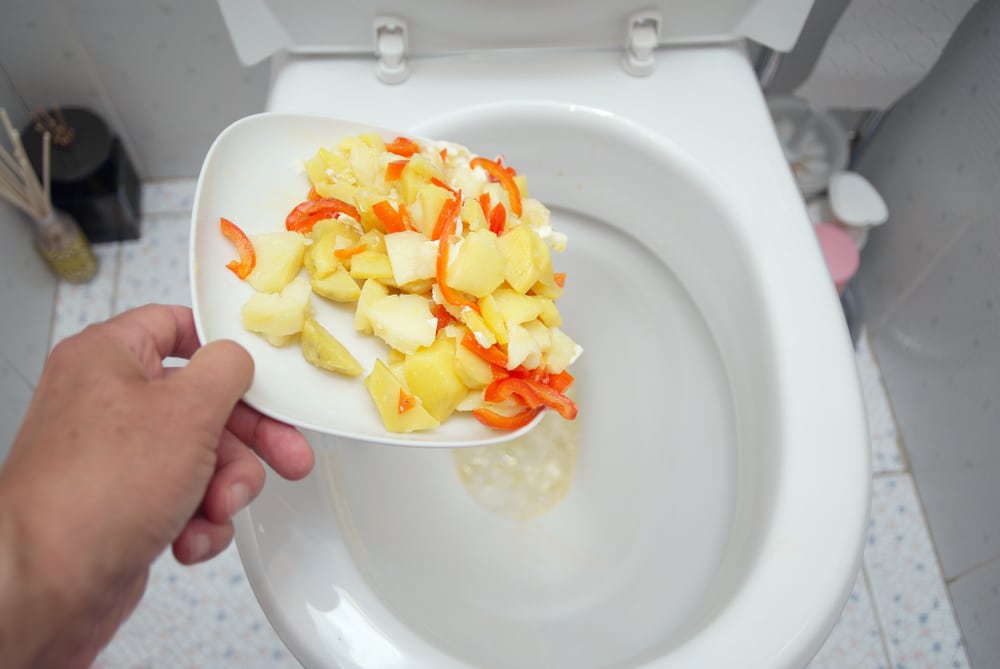Can One to Flush Food in the Toilet?
Can One to Flush Food in the Toilet?
Blog Article
Almost everyone may have their private way of thinking about Flushing Food Down the Toilet?.

Introduction
Lots of people are often faced with the dilemma of what to do with food waste, especially when it concerns leftovers or scraps. One usual inquiry that occurs is whether it's all right to purge food down the commode. In this post, we'll look into the reasons why people could think about purging food, the consequences of doing so, and alternative methods for proper disposal.
Reasons people might think about flushing food
Lack of recognition
Some individuals may not recognize the prospective damage brought on by flushing food down the toilet. They might mistakenly believe that it's a safe technique.
Ease
Flushing food down the bathroom may look like a quick and very easy remedy to dealing with undesirable scraps, particularly when there's no neighboring garbage can readily available.
Negligence
In some cases, individuals may merely choose to flush food out of large idleness, without considering the consequences of their actions.
Effects of flushing food down the commode
Ecological influence
Food waste that winds up in waterways can contribute to air pollution and injury marine ecosystems. In addition, the water used to purge food can stress water resources.
Pipes concerns
Purging food can lead to clogged up pipes and drains, creating pricey pipes repairs and hassles.
Types of food that should not be purged
Fibrous foods
Foods with fibrous structures such as celery or corn husks can obtain entangled in pipes and cause blockages.
Starchy foods
Starchy foods like pasta and rice can take in water and swell, leading to blockages in pipes.
Oils and fats
Greasy foods like bacon or food preparation oils ought to never ever be purged down the toilet as they can strengthen and create blockages.
Appropriate disposal techniques for food waste
Utilizing a waste disposal unit
For homes geared up with garbage disposals, food scraps can be ground up and flushed through the pipes system. However, not all foods are suitable for disposal in this manner.
Recycling
Particular food product packaging materials can be recycled, reducing waste and reducing ecological impact.
Composting
Composting is an eco-friendly method to throw away food waste. Organic products can be composted and used to improve soil for gardening.
The importance of correct waste administration
Decreasing environmental harm
Proper waste administration practices, such as composting and recycling, assistance minimize air pollution and preserve natural deposits for future generations.
Shielding plumbing systems
By preventing the practice of flushing food down the bathroom, home owners can stop costly plumbing repair work and keep the honesty of their pipes systems.
Conclusion
In conclusion, while it may be alluring to flush food down the bathroom for ease, it is necessary to recognize the possible effects of this action. By taking on appropriate waste administration techniques and throwing away food waste sensibly, people can add to healthier plumbing systems and a cleaner setting for all.
FLUSH FOOD DOWN THE TOILET?
FLUSHING FOOD CAN CAUSE BLOCKED DRAINS IN YOUR HOME
All of the plumbing fixtures in your home are connected to the same sewer pipe outside of your home. This outdoor sewer pipe is responsible for transporting all the wastewater from your home to the Council sewer mains. Even small pieces of food that go down the kitchen sink can cause problems for your sewer. It should therefore be obvious that flushing larger bits of food, such as meat, risks a clog in either the toilet itself or the sewer pipes. Flushing greasy food is even more problematic because oil coagulates when it cools, coating the interior lining of your pipes.
THE TOILET IS NOT A BIN
Food isn’t the only thing that people shouldn’t be flushing down the toilet. People use the toilet to dispose of all kinds of things such as tampons, makeup wipes, dental floss, kitty litter and even underwear. Water goes to great lengths to educate residents about the high costs and stress placed on wastewater treatment systems simply from people flushing the wrong stuff down the toilet. It costs taxpayers millions of dollars each year, and homeowners thousands in blocked drain repairs.
FLUSHING FOOD IS A WASTE OF WATER
Flushing food is a waste of our most precious resource - water. In June this year Level 1 water restrictions were introduced to protect water supply from drought conditions. Much of New South Wales continues to be affected by prolonged drought with recent figures revealing up to 97 per cent of the state remains in drought. Depending on whether you have a single or dual flush toilet, every single flush uses between five and 11 litres of water. In the current climate this is a huge amount of water to be wasting on flushing food that should be placed in the bin (or better yet, the compost).
https://www.jabplumbingsolutions.com.au/blog/can-you-flush-food-down-the-toilet

As an avid reader on Think Twice Before Flushing Food Down Your Toilet, I figured sharing that excerpt was a good thing. Enjoyed reading our blog? Please quickly share it. Let other people check it out. We value reading our article about Is it safe to flush food (especially rice) down the toilet?.
Browse Our Site Report this page